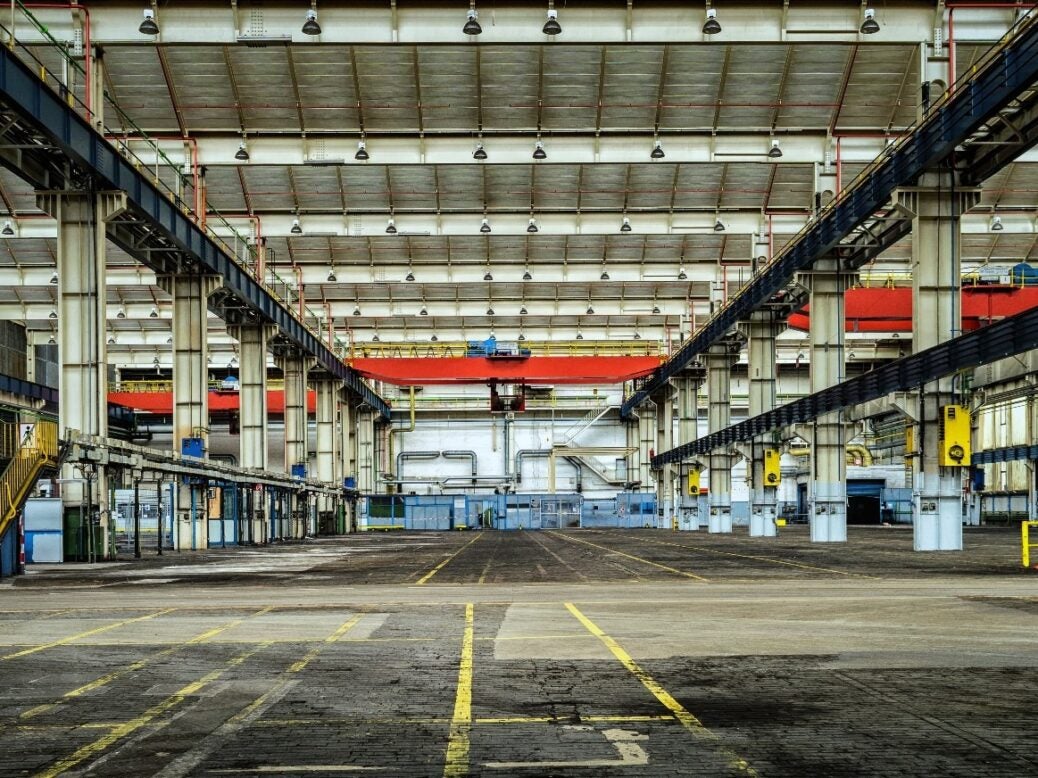
While the suffering for high streets continues, the massive growth in online retail in 2020 has seen a rush to invest in ‘sheds’ – namely logistics real estate
Once upon a time, a shed was the place someone like David Cameron might go to write his memoirs. But speak to your wealth adviser about sheds now and they won’t ask about your literary influences.
That’s because ‘sheds’ are the commercial property industry’s byword for one of the most lucrative and important sectors in the business – logistics.
Buoyed by years of growth in online retail, the sector got an additional shot in the arm in 2020 from the pandemic: the lockdowns drove the proportion of retail done online from 20 per cent to 27 per cent – and experts don’t see that figure sliding back once life returns to ‘normal’.
‘Logistics real estate was hot property anyway because of what had gone on with online retail,’ says Kevin Mofid, head of UK industrials and logistics research at Savills. ‘Then you had Brexit, and everybody started talking about stockpiling because of Brexit – and then you had Covid. What Covid has done is just amplify how important this type of real estate is to our daily lives.’
During the pandemic, PPE suppliers and the NHS pushed up demand, too, and this could lead to longer-term increases in space. ‘A lot of the governments around the world are saying that this can never happen again, we need to store much more PPE and medical equipment within our own countries,’ says Mofid.
Moreover, the threat of a future pandemic and Brexit’s possible disruptions to borders have led manufacturers to consider moving from a ‘just in time’ delivery to a ‘just in case’ supply chain.
Mofid is seeing a lot of money coming into the sector. ‘At the start of 2020 our yields were 4.25 per cent for prime logistics buildings, but the sheer weight of capital targeting the sector has driven those yields downwards.’
As a result, yields for prime logistics are now down to 3.75 per cent, with investors buying into ‘perceived rental growth’.
‘They’re prepared to pay a price that reflects a lower yield in expectation that the rents rise in two or three years’ time,’ he notes. (‘Prime logistics’ is defined as buildings of 50,000 square feet and above, typically built within the past 15 years – and well located, so in a useful place on the road network close to A-roads or motorways.)
According to the latest figures from the Royal Institute of Chartered Surveyors, the net-balance demand for office and retail property in Britain was –66 per cent and –73 per cent respectively in Q3 of 2020. ‘Industrials’, which include logistics, rose by 22 per cent.
These figures were closely followed by rental expectations of professionals across these segments. This, too, is borne out by Savills’ most recent report, which showed that at the end of Q3 the UK logistics sector had outstripped the record demand of its best year to date, 2016 – with still a quarter to go.
In all, 38.6 million square feet of capacity was taken on in new leases in the first nine months of 2020, pushing vacancy levels to just 6 per cent. Of the new take-up, an astonishing 29 per cent went to Amazon, but there was also an upsurge in demand from grocery and high street retailers.
So what’s the best way for investors to get involved?
The simplest method is to buy into one of the publicly traded companies in the field. Of these, the FTSE 100-listed SEGRO, a real estate investment trust (REIT), is a blue-chip to consider.
There’s also the US-listed ProLogis, which claims that $2.2 trillion-worth of the global economy passes through its warehouses annually. Investing this way ‘gives you the portfolio effect’, says William Scoular from Investec’s structured property finance team.
‘Single unit letting risk is quite high.’ A 30-year veteran of the business – he began his career in surveying at CBRE – Scoular says industrials used to be the poor relation of commercial property, yielding 8–10 per cent, compared to 3–4 per cent in retail.
‘And if you were in retail it was very glamorous and if you were in sheds it wasn’t,’ he recalls. ‘As the world has changed the market, it is totally inverted now.’
With yields at 4 per cent for prime logistical assets, he sees two main categories: the light industrial estate stock, made up of 5,000 sq ft leases for ‘metal bashers’; and then the ‘big box’ logistics sector, dominated by the likes of SEGRO and Tritax Big Box (which is both FTSE 250 listed and works with UHNWs and family offices seeking to get into the market).
Drivers for demand in the smaller-scale units are ‘last mile logistics’, but also market shifts in recent decades that have seen much of this being lost to housing and gentrification. ‘There’s a real scarcity factor,’ notes Scoular.
Against this backdrop, the bloodbath on the high street might well see more space coming to logistics (consider, for instance, that Arcadia and Debenhams occupy a combined 15.5 million square feet, according to the Local Data Company).
‘Previously it wouldn’t have made economic sense,’ Scoular says. ‘But now that the yields on retail have softened and industrial yields have hardened the rents are probably comparable – they’re not that different.’
So what if you’ve got a bit of land somewhere useful – near a motorway or town – and want to get involved?
‘You can start by going to a surveying practice and getting some help with the planning,’ says Scoular. ‘Then there are many ways of doing it – you can jointventure it, sell it outright with planning consent. It’s a risk/return situation.’
With the twin caveats of competition from redundant retail space and the economic impact of an implosion on the high street for the economy and online retail, it would seem that, as Kevin Mofid opines, logistics is the ‘least worst’ segment of commercial property right now.
‘You’ve got Brexit, online, Covid, near-shoring,’ he says. ‘It’s a heady mix.’
More from the Spear’s property briefing 2021
Why the wealthy are escaping to the country house
London’s big-money megabasement boom in numbers
The man baking ESG into Blackstone’s $341 billion property portfolio
The Spear’s prime property briefing: will the ‘Boris Bounce’ return?
How the ‘branded residence’ became a go-to for the global super-rich







